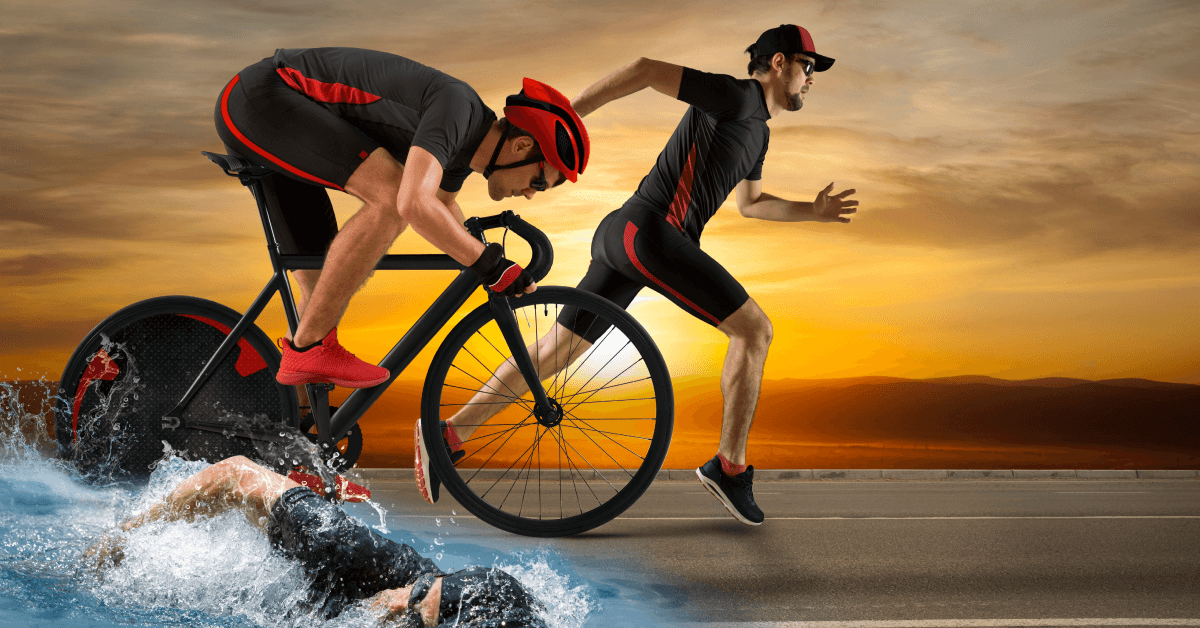One thing that excites triathletes — or young athletes who are just starting out — is that the triathlon training consists of three different sports; which, evidently, keeps the training process interesting and exciting, preventing athletes from becoming psychologically tired with single-sport training.
It is worth noting here that the way a coach will manage an athlete’s training plan depends entirely on the athlete’s previous sporting experience. For example, an athlete who used to be a swimmer — and is very familiar with the technique of this sport — will need to spend less time swimming, than an athlete who has never been involved in this sport; and who should learn swimming techniques, from the basics.
However, as a general rule, an athlete’s training plan should be balanced, regarding the three legs of the triathlon. This implies that each discipline should be performed 3 times per training week; based on the coach’s instructions, every time.
So let’s see, in more detail, how both coaches and athletes can strike a better balance among the three sports, for optimal results.
Triathlon training: How to achieve training balance among the three sports
As mentioned, the way a coach will manage the three triathlon disciplines in the weekly training plan, will depend entirely on the athlete’s experience; as well as their needs and goals. In any case, even when the need to train more for a specific leg emerges, the athlete should execute their training in moderation; and, always in a controlled manner. That’s, because a possible injury in one of the three disciplines will inevitably affect the entire triathlon training.
1. Gradually increase the training load
When it comes to training — especially for demanding races, such as triathlons — the coach needs to increase the training load of the athlete gradually; besides, they’re there to help their athlete maximize their performance and avoid injuries. Therefore, based on the above, even if the need for improvement in one of the three sports is, indeed, increased, the coach must not forget that the training load needs to be increased progressively; otherwise, it would put too much pressure on the athlete’s body and mind, eventually.
2. Ergometric evaluation
We always mention in our articles that frequent evaluation of the athlete’s fitness is of utmost importance; if one wants to improve their performance, that is. In this case — that is, during the triathlon training process — frequent ergometric assessment is even more important. Apart from the athlete’s fitness level, the evaluation will show the coach which training method the athlete needs to apply in each of the three legs. It will show all the areas the athlete needs to focus on — and for how long — in order to maximize their performance.
3. Allocate a lot of time in triathlon training
Finally, to achieve the perfect balance in the three legs, the athlete has to be realistic; not only with their goals, but also with the time they can dedicate to their triathlon training. It takes time for the athlete to prepare, both physically and mentally, for the demanding triathlon distances; and to remain motivated, throughout the whole process.
This especially stands if the athlete intends to participate in the Half and Full-distance triathlon. If the athlete miscalculates the time they can dedicate to their training, they will probably feel the pressure to mash up their training. In turn, this will probably increase the chances of a physical and mental breakdown. On the contrary, with enough time ahead, they’ll become strong enough to endure the race — and, why not, excel.
Enjoying our content?
Be the first to know when something new comes out!
In conclusion
In conclusion, the triathlon is a combined sport that requires great discipline in the coaching process; especially, since it includes three different sports. However, the balance among the three triathlon legs should always be based on the needs and goals of the athlete.
On the other hand, the athlete’s training — and performance, for that matter — will be influenced by:
- their previous experience
- their ergometric evaluation — which, the coach should repeat, at regular intervals
- the time they can dedicate to training
Keep in mind, improvement will come with time, and after competing at a few races; after all, it’s a matter of experience, too. Finally, neither the coach nor the athlete should focus too much on one leg; this may negatively affect the athlete’s performance in the other two legs. And, by extension, the athlete’s performance in the race.
